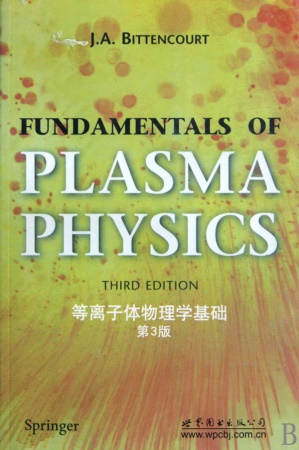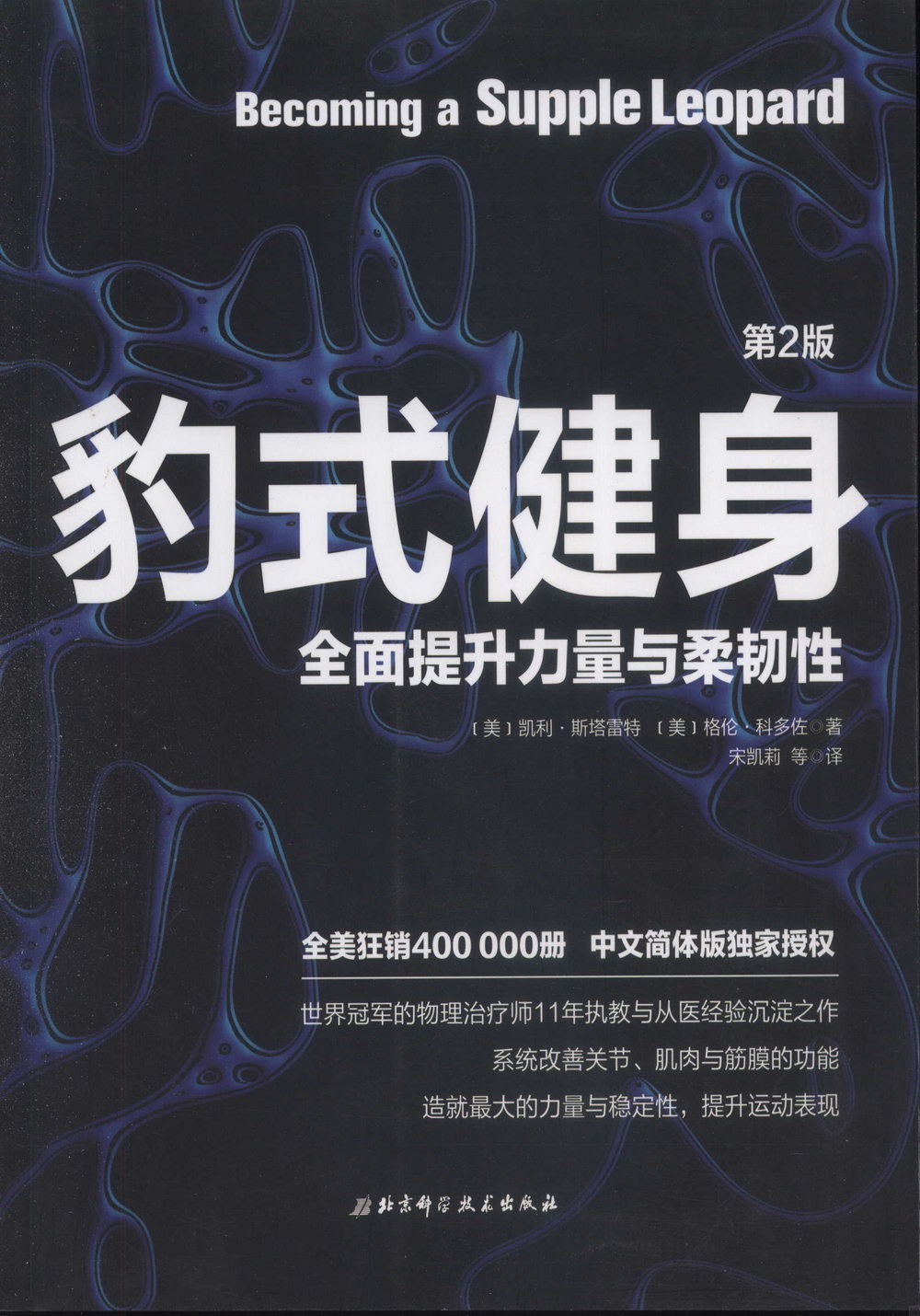等離子體物理學基礎(英文第3版) | 輕鬆瘦下來的秘訣 - 2024年11月

等離子體物理學基礎(英文第3版)
系統地介紹了等離子體物理學的基本理論及其在很多重要等離子體現象中的應用。《等離子體物理學基礎(第3版)(英文版)》內容全面,結構合理,闡述清晰。作者注重表達的簡潔性,沒有拘泥於形式,對自學和進階很有好處。從統計動力學討論等離子體現象是《等離子體物理學基礎(第3版)(英文版)》的一大特色。另外,作者對數學處理技巧說明得非常詳細,列舉了數學推導的中間步驟,這些通常是留給讀者自己完成的,同時強調了這些公式的物理解釋,幫助讀者獲得更深入的理解。書中設計的習題是內容的重要組成部分,也是進一步提高的出發點。閱讀《等離子體物理學基礎(第3版)(英文版)》需要經典力學和電動力學的基本知識。《等離子體物理學基礎(第3版)(英文版)》適合於初次學習等離子體物理的高年級本科生和一年級研究生,同時也適用於對等離子體現象以及相關領域諸如空間物理和應用電磁學等感興趣的研究人員。目次:簡介;穩恆和均勻電磁場中的帶電粒子運動;非均勻靜磁場中的帶電粒子運動;隨時間變化的電磁場中的帶電粒子運動;等離子體動力學理論基礎;平均值和宏觀變量;平衡態;宏觀輸運方程;導電流體的宏觀方程;等離子體電導率和擴散;若干基本等離子體現象;磁流體動力學的簡單應用;縮聚效應;自由空間電磁波;磁流體動力學波;冷等離子體波;暖等離子體波;熱各向同性等離子體波;熱磁化等離子體波;等離子體中粒子間相互作用;波爾茲曼和佛克爾—普朗克方程;等離子體中的輸運過程;附錄A:常用的矢量關系;附錄B:迪卡爾坐標和曲線坐標中的常用關系;附錄C:物理常數:附錄D:物理單位間的換算因子;附錄出部分重要的等離子體參數;附錄F:若干典型等離子體的近似量極;索引。讀者對象:物理,化學和材料專業的高年級本科生、研究生和相關專業的科研人員。
PREFACE1.INTRODUCTION1. General Properties of Plasmas1.1 Definition of a Plasma1.2 Plasma as the Fourth State of Matter1.3 Plasma Production1.4 Particle Interactions and Collective Effects1.5 Some Basic Plasma Phenomena2. Criteria for the Definition of a Plasma2.1 Macroscopic Neutrality2.2 Debye Shielding2.3 The Plasma Frequency3. The Occurrence of Plasmas in Nature3.1 The Sun and its Atmosphere3.2 The Solar Wind3.3 The Magnetosphere and the Van Allen Radiation Belts3.4 The Ionosphere3.5 Plasmas Beyond the Solar System4. Applications of Plasma Physics4.1 Controlled Thermonuclear Fusion4.2 The Magnetohydrodynamic Generator4.3 Plasma Propulsion4.4 Other Plasma Devices5. Theoretical Description of Plasma Phenomena5.1 General Considerations on a Self-Consistent Formulation5.2 Theoretical ApproachesProblems2.CHARGED PARTIE MOTION IN CONSTANT AND UNIFORM UNIFORM ELECTROMAGNETIC FIELDS1. Introduction2. Energy Conservation3. Uniform Electrostatic Field4. Uniform Magnetostatic Field4.1 Formal Solution of the Equation of Motion4.2 Solution in Cartesian Coordinates4.3 Magnetic Moment4.4 Magnetization Current5. Uniform Electrostatic and Magnetostatic Fields5.1 Formal Solution of the Equation of Motion5.2 Solution in Cartesian Coordinates6. Drift Due to an External ForceProblems3.CHARGED PARTICLE MOTION IN NONUNIFORM MAGNETOSTATIA FIELDS1. Introduction2. Spatial Variation of the Magnetic Field2.1 Divergence Terms2.2 Gradient and Curvature Terms2.3 Shear Terms3. Equation of Motion in the First-Order Approximation4. Average Force Over One Gyration Period4.1 Parallel Force4.2 Perpendicular Force4.3 Total Average Force5. Gradient Drift6. Parallel Acceleration of the Guiding Center6.1 Invariance of the Orbital Magnetic Moment and of the Magnetic Flux6.2 Magnetic Mirror Effect6.3 The Longitudinal Adiabatic Invariant7. Curvature Drift8. Combined Gradient-Curvature DriftProblems4.CHARGED PARTICLE MOTION IN TIME-VARYING ELECTROMAGNETIC FIELDS1. Introduction2. Slowly Time-Varying Electric Field2.1 Equation of Motion and Polarization Drift2.2 Plasma Dielectric Constant3. Electric Field with Arbitrary Time Variation3.1 Solution of the Equation of Motion3.2 Physical Interpretation3.3 Mobility Dyad3.4 Plasma Conductivity Dyad3.5 Cyclotron Resonance4. Time-Varying Magnetic Field and Space-Varying Electric Field4.1 Equation of Motion and Adiabatic Invariants4.2 Magnetic Heating of a Plasma5. Summary of Guiding Center Drifts and Current Densities5.1 Guiding Center Drifts5.2 Current DensitiesProblems5.Summary of Guiding Center Drifts and Current DensitiesProblems1. Introduction2. Phase Space2.1 Single-Particle Phase Space2.2 Many-Particle Phase Space2.3 Volume Elements3. Distribution Function4. Number Density and Average Velocity5. The Boltzmann Equation5.1 Collisionless Boltzmann Equation5.2 Jacobian of the Transformation in Phase Space5.3 Effects of Particle Interactions6. Relaxation Model for the Collision Term7. The Vlasov EquationProblems6.AVERAGE VALUES AND MACROSCOPIC VARIABLES1. Average Value of a Physical Quantity2. Average Velocity and Peculiar Velocity3. Flux4. Particle Current Density5. Momentum Flow Dyad or Tensor6. Pressure Dyad or Tensor6.1 Concept of Pressure6.2 Force per Unit Area6.3 Force per Unit Volume6.4 Scalar Pressure and Absolute Temperature7. Heat Flow Vector8. Heat Flow Triad9. Total Energy Flux Triad……10.Higher Moments of the Distribution FunctionProblems7. THE EQUILIBRIUM STATE1. The Equilibrium State Distribution Function2. The Most Probable Distribution3. Mixture of Various Particle Species4. Properties of the Maxwell-Boltzmann Distribution Function5. Equilibrium in the Presence of an External Force6. Degree of Ionization in Equilibrium and the Saha EquationProblems8. MACROSCOPIC TRANSPSRT EQUATIONS1. Moments of the Boltzmann Equation2. General Transport Equation3. Conservation of Mass4. Conservation of Momentum Conservation of Energy6. The Cold Plasma Model7. The Warm Plasma ModelProblems9. MACROSCOPIC EQUATIONS FOR A CONDUCTING FLUID1. Macroscopic Variables for a Plasma as a Conducting Fluid2. Continuity Equation3. Equation of Motion4. Energy Equation5. Elect rodynamic Equations for a Conducting Fluid6. Simplified Magnetohydrodynamic EquationsProblems10. PALSMA CONDUCTIVITY AND DIFFUSION1. Introduction2. The Langevin Equation3. Linearization of the Langevin Equation4. DC Conductivity and Electron Mobility5. AC Conductivity and Electron Mobility6. Conductivity with Ion Motion7. Plasma as a Dielectric Medium8. Free Electron Diffusion9. Electron Diffusion in a Magnetic Field10. Ambipolar Diffusion11. Diffusion in a Fully Ionized PlasmaProblems11. SOME BASIC PLASMA PHENOMENA1. Electron Plasma Oscillations2. The Debye Shielding Problem3. Debye Shielding Using the Vlasov Equation4. Plasma Sheath5. Plasma ProbeProblems12. SIMPLE APPLICATIONS OF MAGETOHYORODYNAMICS1. Fundamental Equations of Magnetohydrodynamics2. Magnetic Viscosity and Reynolds Number3. Diffusion of Magnetic Field Lines4. Freezing of Magnetic Field Lines to the Plasma5. Magnetic Pressure6. Isobaric Surfaces7. Plasma Confinement in a Magnetic FieldProblems13. THE PINCH EFFECT14. ELECTROMAGNETIC WAVES IN FREE SPACE1. Introduction2. The Equilibrium Pinch3. The Bennett Pinch4. Dynamic Model of the Pinch5. Instabilities in a Pinched Plasma Column6. The Sausage Instability7. The Kink Instability8. Convex Field ConfigurationsProblems15. MAGNETOHYDRODYNAMIC WAVES1. The Wave Equation2. Solution in Plane Waves3. Harmonic Waves4. Polarization5. Energy Flow6. Wave Packets and Group VelocityProblems16. WAVES IN COLD PLASMAS1. Introduction2. MHD Equations for a Compressible3. Propagation Perpendicular to the Magnetic Field4. Propagation Parallel to the Magnetic Field5. Propagation at Arbitrary Directions6. Effect of Displacement Current7. Damping of MHD Waves Problems5. Wave Propagation in Magnetized Cold Plasmas6. Propagation Parallel to Bo7. Propagation Perpendicular to Bo8. Propagation at Arbitrary Directions9. Some Special Wave Phenomena in Cold PlasmasProblems17. WSVES IN WARM PLASMAS1. Introduction2. Waves in a Fully Ionized Isotropic Warm Plasma3. Basic Equations for Waves in a Warm Magnetoplasma4. Waves in a Warm Electron Gas in a Magnetic Field5. Waves in a Fully Ionized Warm Magnetoplasma6. SummaryProblems18. WSVES IN HOT ISOTROPIC PLASMAN1. Introduction2. Basic Equations3. General Results for a Plane Wave4. Electrostatic Longitudinal Wave in a Hot Isotropic Plasma5. Transverse Wave in a Hot Isotropic Plasma6. The Two-Stream Instability7. SummaryProblems19. WAVES IN HOT MAGNETIZED PLASMAS1. Introduction2. Wave Propagation Along the Magnetostatic Field in a Hot Plasma3. Wave Propagation Across the Magnetostatic Field in a Hot Plasma4. SummaryProblems20. PARTICLE INTERACTIONS IN PLASMAS1. Introduction2. Binary Collisions3. Dynamics of Binary Collisions4. Evaluation of the Scattering Angle5. Cross Sections6. Cross Sections for the Hard Sphere Model7. Cross Sections for the Coulomb Potential8. Screening of the Coulomb PotentialProblems21. THE BOL TZMANN AND THE FOKKER-PLANCK EQUATIONS1. Introduction2. The Boltzmann Equation3. The Boltzmann’’s H Function4. Boltzmann Collision Term for a Weakly Ionized Plasma5. The Fokker-Planck EquationProblems22. TPANSPORT PROCESSES IN PLASMAS1. Introduction2. Electric Conductivity in a Nonmagnetized Plasma3. Electric Conductivity in a Magnetized Plasma4. Free Diffusion5. Diffusion in a Magnetic Field6. Heat FlowProblemsAPPENDIX AUseful Vector RelationsAPPENDIX BUseful Relations in Cartesian andin Curvilinear CoordinatesAPPENDIX CPhysical Constants (MKSA)APPENDIX DConversion Factors for Physical UnitsAPPENDIX ESome Important Plasma ParametersAPPENDIX FApproximate Magnitudes in Some Typical PlasmasINDEX
 巴西柔術
巴西柔術 鬼跤:如何摔倒更高更壯的對手(附....
鬼跤:如何摔倒更高更壯的對手(附.... 功能性訓練:提升運動表現的動作練習...
功能性訓練:提升運動表現的動作練習... 身體調校聖經
身體調校聖經 李小龍思想解碼 (第二版)
李小龍思想解碼 (第二版) 國際綜合格斗概論
國際綜合格斗概論 巴西柔術教本
巴西柔術教本 自由搏擊終極指南(全彩圖解版)
自由搏擊終極指南(全彩圖解版) 知日·牙白!富士山
知日·牙白!富士山 豹式健身:全面提升力量與柔韌性(第2版)
豹式健身:全面提升力量與柔韌性(第2版)